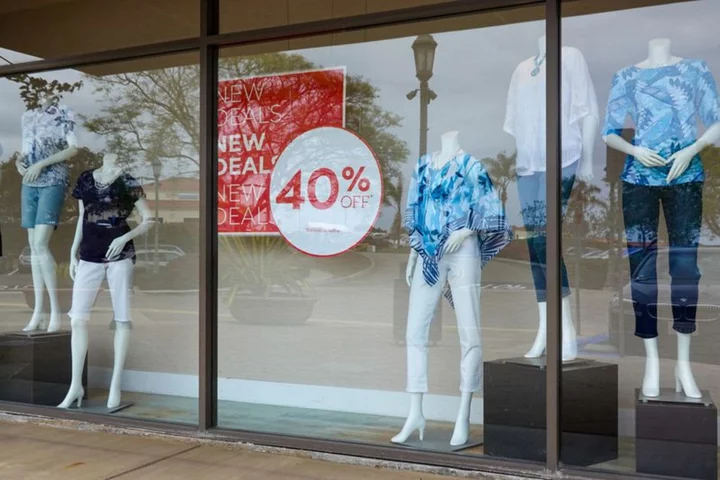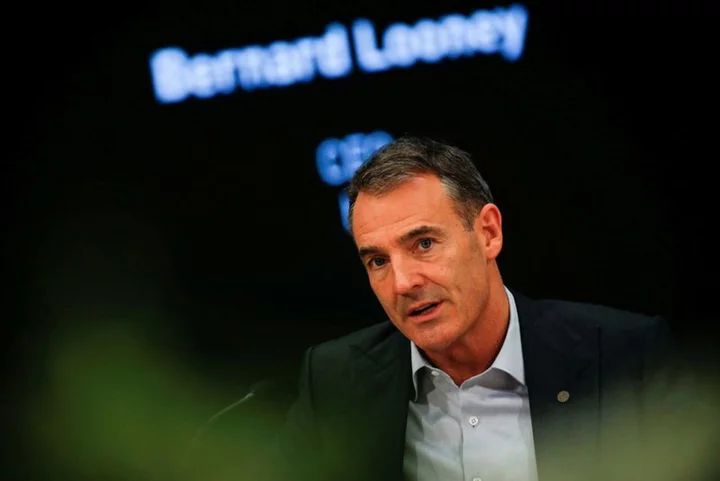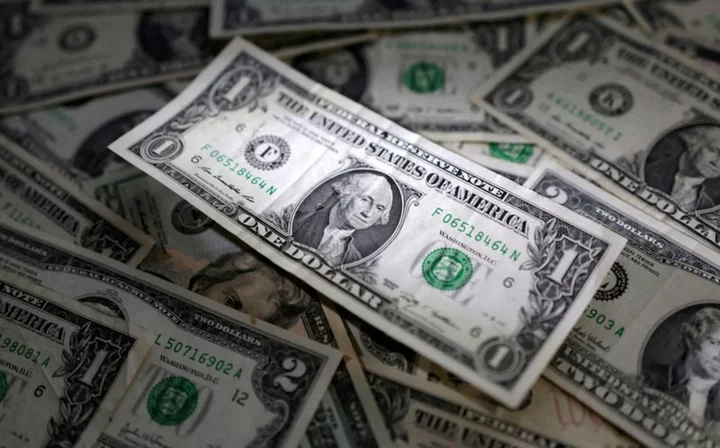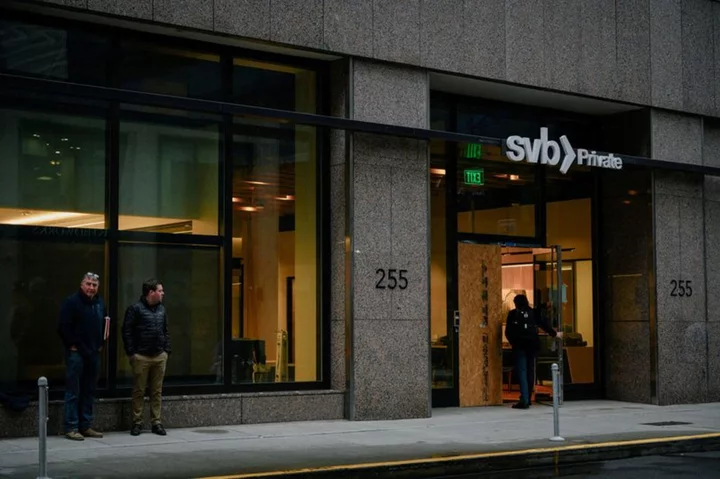By Lucia Mutikani
WASHINGTON (Reuters) -U.S. retail sales increased more than expected in August as a surge in gasoline prices boosted receipts at service stations, but the trend in underlying spending on goods slowed as Americans grappled with high inflation.
The report from the Commerce Department on Thursday also showed spending on goods in July was not as robust as initially thought. The data, however, did not change expectations for solid growth in overall consumer spending this quarter amid evidence of splurging on services like concerts, movies and sporting events, despite worries about inflation.
It was unlikely to have an impact on near-term monetary policy, with the Federal Reserve expected to keep interest rates unchanged next Wednesday.
"The economy is in a good place for now with moderate consumer demand that is not hot enough to bring inflation back to life," said Christopher Rupkey, chief economist at FWDBONDS in New York.
Retail sales rose 0.6% last month. Data for July was revised lower to show sales advancing 0.5% instead of the previously reported 0.7%. Economists polled by Reuters had forecast retail sales gaining 0.2%. Retail sales are mostly goods and are not adjusted for inflation. They rose 2.5% on a year-on-year basis.
Receipts at gasoline stations rebounded 5.2% after declining
10.3% in July. Gasoline prices accelerated in August, peaking at $3.984 per gallon in the third week of the month, the highest this year, according to data from the U.S. Energy Information Administration. That compared to $3.676 per gallon during the same period in July.
Higher gasoline prices boosted producer prices in August, other data from the Labor Department showed on Thursday.
Excluding gasoline stations, retail sales rose 0.2% last month. The value of sales at motor dealerships increased 0.3%. Online sales were unchanged after accelerating 1.5% in July. Amazon's Prime Day promotion in July, which was the biggest on record, and parents starting their back-to-school shopping early, likely pulled forward some spending.
Receipts at furniture stores dropped 1.0%. But electronics and appliance store sales rose 0.7%. Clothing store sales increased 0.9%. Receipts at building material and garden equipment supplies dealers gained 0.1%.
But consumers cut back spending on sporting goods, hobbies, books and musical instruments. Grocery store sales rose as did receipts at department stores. Sales at food services and drinking places, the only services category in the retail sales report, rose 0.3% after increasing 0.8% in July. Economists view dining out as a key indicator of household finances.
U.S. stocks opened higher. The dollar rose against a basket of currencies. U.S. Treasury prices fell.
DIMMING OUTLOOK
Though spending remains supported by higher wages from a tight labor market, the outlook is darkening. Excess savings accumulated during the COVID-19 pandemic continue to be run down. Credit card balances have risen sharply, with delinquencies at an 11-year high in the second quarter, according to recent data from the New York Federal Reserve.
Millions of Americans resume payments on student loans in October. Goldman Sachs estimates that the resumption of payments in full would be equal to roughly $70 billion, or around 0.3% of disposable personal income.
Excluding automobiles, gasoline, building materials and food services, retail sales edged up 0.1% in August. Data for July was revised down to show these so-called core retail sales up 0.7% instead of the previously reported 1.0%.
Core retail sales correspond most closely with the consumer spending component of GDP. Despite August's tepid core sales and the downward revision to July's data, strong spending on services is expected, which should lift consumption.
Gross domestic product growth estimates for the third quarter are currently as high as a 5.6% annualized rate. The economy grew at a 2.1% pace in the April-June quarter.
The economy's resilience is underscored by the labor market, which remains tight.
A separate report from the Labor Department on Thursday showed initial claims for state unemployment benefits rose to a seasonally adjusted 220,000 for the week ended Sept. 9 from 217,000 the prior week.
Economists had forecast 225,000 claims for the latest week. Claims are on the lower end of their 194,000-265,000 range for this year.
The number of people receiving benefits after an initial week of aid, a proxy for hiring, rose 4,000 to 1.688 million during the week ending Sept. 2, the claims report showed. The so-called continuing claims remain low by historical standards, a sign that some laid-off workers are experiencing short bouts of unemployment.
"The claims data are a reminder that the job market remains relatively tight," said Nancy Vanden Houten, lead U.S. economist at Oxford Economics in New York.
(Reporting by Lucia Mutikani; Editing by Chizu Nomiyama)









